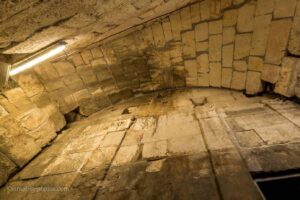Nestled in the vibrant city of Tel Aviv, the Helena Rubinstein Pavilion for Contemporary Art is a must-visit for art enthusiasts and curious travelers alike. This pavilion is part of the Tel Aviv Museum of Art and is dedicated to showcasing contemporary art from both Israeli and international artists. With its dynamic exhibitions and thought-provoking installations, the pavilion offers a unique glimpse into the world of modern art.
What to See
The Helena Rubinstein Pavilion is renowned for its rotating exhibitions that feature a diverse range of contemporary art forms, including painting, sculpture, photography, video art, and installations. Each exhibition is carefully curated to challenge perceptions and inspire dialogue among visitors. The pavilion often hosts solo exhibitions of prominent artists as well as group shows that explore current themes and trends in the art world. Visitors can expect to see works that push boundaries and offer fresh perspectives on contemporary issues.
A Bit of History and Interesting Facts
The pavilion was established in 1959, thanks to the generous donation of Helena Rubinstein, a Polish-American businesswoman and art collector. Rubinstein was a pioneer in the cosmetics industry and a passionate supporter of the arts. Her contribution helped create a space dedicated to contemporary art in Tel Aviv, enriching the city’s cultural landscape. Over the years, the pavilion has become a significant platform for emerging and established artists, reflecting the dynamic and ever-evolving nature of contemporary art.
An interesting fact about the pavilion is its architectural design. The building itself is a work of art, with its modernist style and clean lines. It was designed by the renowned Israeli architect Yaakov Rechter, who was awarded the Israel Prize for architecture. The pavilion’s design complements the art it houses, creating a harmonious environment for visitors to explore.
How to Get There and Tips for First-Time Visitors
The Helena Rubinstein Pavilion is conveniently located in the heart of Tel Aviv, making it easily accessible by public transportation. Visitors can take a bus or taxi to the pavilion, which is situated near the Habima Square, a central cultural hub in the city. For those who prefer to drive, there are parking facilities available nearby.
First-time visitors should consider checking the pavilion’s website or contacting the Tel Aviv Museum of Art for information on current exhibitions and opening hours. It’s also a good idea to allocate a couple of hours to fully appreciate the art on display. The pavilion is part of a larger cultural complex, so visitors might want to explore other nearby attractions, such as the main building of the Tel Aviv Museum of Art or the Habima Theatre.
In summary, the Helena Rubinstein Pavilion for Contemporary Art is a vibrant and engaging destination for anyone interested in modern art. With its ever-changing exhibitions and rich history, it offers a unique cultural experience in the heart of Tel Aviv.








